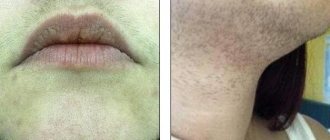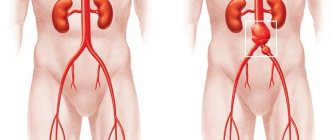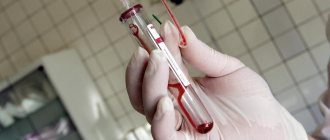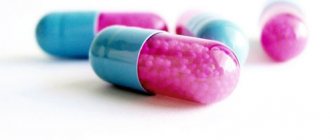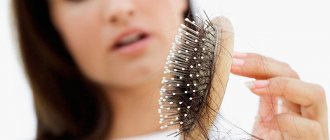Vaginal candidiasis or candidal vaginitis (colpitis), thrush is an inflammatory disease of the vaginal mucosa caused by yeast-like fungi of the genus Candida (Candida spp). These microorganisms are opportunistic pathogens. Normally, they live on human skin and mucous membranes without causing inflammation, but when exposed to a number of factors, they begin to multiply uncontrollably.
The disease is widespread among women of fertile age. According to statistics, more than 75% of patients encountered the disease once, and 50% of them encountered an exacerbation of candidiasis, 5% with a recurrent form.
What does thrush look like in women?
Among all infectious and inflammatory diseases of the female genital tract, thrush has the most characteristic picture, which can be described by the following symptoms:
- curd-like discharge;
- severe itching in the external genital area;
- varying degrees of pain and burning (from mild discomfort to severe pain).
As a rule, itching intensifies significantly in the second half of the day and often bothers a woman during sleep, as well as after water gets on the surface of the mucous membrane.
Pain and burning tend to appear or intensify during urination and/or during sexual intercourse.
The first signs and symptoms of thrush
The manifestation of thrush is characterized by specific symptoms, so there are no difficulties with diagnosis. The severity and severity of the process directly depends on the basic state of the vaginal microflora and immunity.
Typically, thrush occurs against the background of some provoking factor: hypothermia, prolonged use of antibiotics, stress. Typical symptoms are:
- Curd-like discharge from the vagina. This is a symptom characteristic of the disease, which allows a correct diagnosis to be made already at the initial stage of the disease. Appearance: whitish or gray-white with grains of lumps.
- Itching. Appears even before discharge. It is painful, persistent, and does not disappear after hygiene procedures. The peak of sensations is evening time. Worsens when walking. Water does not bring relief, but increases the severity of symptoms.
- Microcracks. Their appearance is associated with the predominance of an acidic environment created by mushrooms. This is the entrance gate for the accompanying bacterial flora. If the disease is not treated on time, fungal-bacterial inflammation develops.
- Pain. It is felt during urination or sexual intercourse. Its mechanism is associated with irritation of microcracks.
If a fungal infection is accompanied by a bacterial one, the discharge becomes purulent in nature (dirty yellow). Then thrush can be confused with bacterial vaginosis. Antibiotics prescribed in this case only worsen the disease.
Causes of thrush in women
All extremely unpleasant symptoms of thrush in women are associated with the rapid proliferation of Candida fungi on the mucous membrane of the vulva and vagina.
Candida is classified as opportunistic microorganisms, that is, these pathogenic fungi can coexist with the human body without causing any harm to it.
The following unfavorable factors can provoke the development of thrush:
- use of tight underwear made of synthetic materials;
- violation of hygiene rules (untimely replacement or incorrect selection of pads during menstruation, etc.);
- diabetes;
- pregnancy;
- broad-spectrum antibiotics;
- use of high-dose oral contraceptives;
- steroid therapy;
- use of diaphragms, IUDs and spermicides;
- general decrease in immune defense (AIDS, congenital immunodeficiencies, cachexia, condition after severe injuries, operations, etc.).
It must be said that Candida fungi can also affect other mucous membranes, so doctors call thrush by the complex name vulvovaginal candidiasis (VVC). However, in popular literature, the term VVC is often shortened to one word - “candidiasis” or replaced with a more understandable phrase “candidiasis in women.”
How does candidiasis manifest?
It is almost impossible to confuse candidiasis with another sexually transmitted disease (according to the symptoms and manifestation of the disease). Only this disease occurs with such pronounced symptoms and a complete absence of attempts to “hide” from the attention of the carrier of the infection. Inconspicuous and at first modest, Candida fungus causes symptoms in women so strong that it is almost impossible to overcome them without treatment.
How does a woman with thrush feel:
- Dampness in the crotch, or rather a real swamp. Vaginal discharge becomes viscous and very copious. They are secreted around the clock, have a cheesy structure, and contain many white-colored scales or flakes. In severe cases, the discharge becomes thicker, consisting of whitish mucus and dense cheesy lumps.
- Exhausting itching. Vaginal discharge is distinguished not only by its abundance, but also by its peculiar acridity. They cause irritation on the mucous membranes and even on the skin of the perineum, which causes itching, hyperemia and burning.
- Periodically occurring pain. A change in the balance of microflora in the vagina during candidiasis leads to inflammatory processes. That is why the disease is accompanied by painful urination and discomfort during sexual intercourse.
- Unpleasant smell. The Candida fungus multiplies so actively that its colonies can be seen with the naked eye. White dense plaque on the mucous membranes consists of living and dead microorganisms and their metabolic products. In this state of affairs, smell is a common occurrence.
Curdled flakes in vaginal discharge are the first sign of candidiasis in women.
With a disease known as vaginal candidiasis, the symptoms do not cause difficulties in identifying the pathology. Any woman can recognize the disease, but treatment of candidiasis should always be under the supervision and guidance of a doctor.
Diagnosis of thrush in women
Thrush is a fairly common disease. According to statistics, every fourth woman experiences acute thrush throughout her life.
Therefore, people have the opinion that the clinical signs of thrush are so characteristic that the correct diagnosis can be established independently, focusing on diagnostic tables and photos of thrush in women on the Internet.
This is an extremely dangerous misconception. The fact is that thrush can accompany other infectious diseases of the female genital organs. With a combined lesion (gonorrhea + candidiasis, trichomoniasis + candidiasis, etc.), the symptoms of thrush may hide the signs of another infectious pathology.
Therefore, in order to prescribe full treatment, a diagnosis should be carried out, which includes a standard examination in a gynecological chair and laboratory tests.
What is thrush?
Vaginal candidiasis (thrush) is a type of fungal infection caused by yeast-like fungi of the genus Candida. Surprisingly, the presented fungi are constantly present in humans, even in men. Fungi are found mainly in the oral cavity, in the colon, and in women, additionally in the vagina.
Thrush is an overgrowth of fungi that causes itching and burning, as well as the formation of milk thickens.
Remember the quite common stomatitis in an infant - this is thrush, caused by a weakened immune system or due to infection entering the baby’s oral cavity.
Thrush develops to a greater extent in women in the vagina, since this place is the most favorable area for the rapid proliferation of fungi. Since this happens quite often, women have already stopped seeing a doctor and began to treat the disease on their own.
This is not recommended, because you can harm the body even more if you choose medications that are unsuitable for treatment.
Main types of thrush
It is impossible to tell exactly the types and classification of vaginal candidiasis - the classification simply does not exist, although there are still types. The following common types of disease are distinguished:
- Acute candidiasis - heavy discharge and other striking clinical manifestations are observed, but lasting no more than two months with appropriate treatment. Acute candidiasis can last only a few days, after which the bright manifestations stop, but treatment cannot be stopped.
- Chronic candidiasis is a type of disease when the treatment taken has little effectiveness. Symptoms and complaints in women are defined to a minimum, but damage to the mucous membrane bothers the patient for more than two months.
- Candidiasis – there are no symptoms, the patient has no complaints, thrush is often discovered unexpectedly. As a rule, a woman undergoes a scheduled appointment with a gynecologist and only the results of the analysis determine the presence of Candida fungus.
The given types better characterize the forms of the lesion and pathology. There are also some types of thrush, but the terms are more used only in medicine and for laboratory research.
What is thrush? How to determine it? Video:
Is it possible to treat thrush in women at home?
Treatment of thrush is carried out at home, but the drugs must be prescribed by a specialist doctor. It should be borne in mind that the complex of medical measures for thrush in women must necessarily include measures aimed at eliminating the factors that provoked the rapid development of Candida fungi, such as:
- withdrawal of medications (estrogen-progestogen contraceptives, glucocorticoids, antibiotics);
- rejection of bad habits;
- strict adherence to personal hygiene rules;
- limiting carbohydrates;
- Stabilization of blood sugar levels in diabetes mellitus.
A week after the end of the course of treatment for both acute and chronic thrush in women, laboratory monitoring of the achieved results is carried out, and if the disease is recurrent, anti-relapse treatment is indicated.
Prevention
Thrush is an unpleasant disease that is best avoided by following simple preventive measures. It is necessary to pay attention to personal hygiene. Women are recommended to wash themselves twice a day, morning and evening, using intimate hygiene products. It is undesirable to use soap, it dries the skin and mucous membranes, promotes alkalization of microflora and dysbacteriosis.
You should use individual washcloths and towels to avoid infection from another person. And your towel should always be clean and dry. Microorganisms actively multiply on damp fabric.
It is very important to eat a balanced diet and avoid vitamin deficiency. If you have a tendency to develop vulvovaginal candidiasis, it is better to give up alcohol and sweets and baked goods.
Since yeast-like fungi get along well with STDs, it is best to avoid infection. To do this, it is recommended to have sex only with one permanent healthy partner, and also to protect yourself with a condom.
To prevent fungal inflammation, you need to exercise, get enough rest, drink plenty of water and avoid hypothermia. All these factors will help strengthen the immune system and prevent the uncontrolled proliferation of microorganisms.
Treatment of acute thrush in women
For primary acute thrush, local antifungal therapy is usually prescribed. To treat women who have never had sexual intercourse, special attachments are used to effectively treat the disease without damaging the hymen.
Treatment monitoring is carried out 7 days after the end of the course. If the therapy is not effective enough, a repeat course of another fungicidal (antifungal) drug is prescribed. After the candidiasis itself has been cured, a course of medications is indicated that restores the bacterial flora of the vagina.
Treatment of thrush
Treatment of thrush lasts no more than a week, and the effectiveness of the treatment process ultimately reaches 90%. During this period, it is important to observe certain requirements for intimate hygiene and abstain from sexual relations. To prevent the recurrence of the disease after stopping the use of medications, it is necessary to wash with a soda solution, potassium permanganate or a solution of boric acid.
It is necessary to remember that these products are used only for washing and in no case are used in the form of douching compositions. Various vaginal preparations in the form of antimycotic suppositories, creams or tablets are used as therapeutic agents for treatment.
The entire treatment process consists of several stages, carried out sequentially, for example:
- Identification of the source of infection.
- Determination of the appropriate antifungal drugs that are most effective in each case.
- Identification of the primary cause of fungal infection and its treatment.
- Elimination of disturbances in the body's immune defense.
- Restoration of normal vaginal microflora in women.
- Mandatory treatment of men with local antifungal agents.
The treatment course is prescribed individually based on the stage of development of the lesion and the characteristics of the fungal infection. For a mild form, treatment with local drugs will be sufficient, but for a severe form of the disease, it is necessary to use therapy with more serious systemic medications.
Treatment of chronic thrush in women
Local therapy for thrush is quite effective, however, in some patients, relapses of the disease develop within the first three months after the end of the course. In this case, the process often becomes chronic.
The same factors contribute to this sad development of events as in the case of the development of acute candidiasis (diabetes mellitus, poor hygiene, unsuccessful selection of contraceptives, etc.). In addition, there are strains of Candida fungi that are quite resistant to antifungal drugs, which makes them prone to a chronically relapsing course of the disease.
Chronic thrush in women requires more complex treatment. As a rule, a combined local and systemic effect (oral administration) is prescribed. Control of fungicidal therapy is carried out during three menstrual cycles the day after the end of menstruation.
Treatment of chronic thrush involves drug prevention of relapses for 6 months: a systemic antifungal drug once a month (on the first day of menstruation) or therapy with antifungal ointments once a week.
Common mistakes in treatment
Half of women with vaginal candidiasis (Gardnerella vaginalis or Gardnerella vaginalis) are confident that they can cope with the problem by douching daily. And women who are confident in their own medical literacy wash the already injured vaginal mucosa with anything: a solution of soda, lemon juice, a decoction or infusion of celandine, potassium permanganate or chlorhexidine. They are unaware that this treatment of candidiasis further stimulates the activity of the yeast-like fungi Candida albicans.
Douching is not always the right way out of a situation with thrush
This microorganism lives on the mucous membrane of the vagina, mouth, rectum and on the surface of the skin even in completely healthy people.
It's worth knowing.
It has been proven that Candida fungi are found in women even during gestation in the placental fluid, as well as in the oral cavity of newborn babies.
By its nature, this fungus cannot be called pathogenic until it turns into that annoying thrush, which cannot be driven away by most folk remedies.
Top article: Typical symptoms of thrush in women
It is in this two-facedness that the main danger of vaginal candidiasis lies - you never know when the disease will “shoot up”. However, the main factors that act on the fungus as a detonator have been established:
- Changes in diet - excessive amounts of light carbohydrates and fats in the diet against the background of a decrease in lactic acid bacteria.
- Stressful situations - overheating or hypothermia, severe fear, and sometimes joy.
- Periodic fluctuations in hormonal levels - candidiasis in women worsens before and during menstruation.
- Disturbance of microflora balance under the influence of long-term use of certain medications.
At the moment of their appearance, or, even worse, the coincidence of several factors at once, there is an increased proliferation of candida fungus in women. Healthy microflora begins to resist the attack of the microorganism that has become a pathogen, but suffers a crushing defeat. This is because women, unknowingly, use antibiotics or the solutions mentioned above that have an antimicrobial (and not antifungal) effect.
How to independently verify the presence of a sexually transmitted infection
Many illnesses have no specific symptoms. If they exist, then only a doctor can tell what diseases they indicate. What can’t be said about most sexually transmitted diseases, where... “Read more”
The result of this “therapy” is an increase in discharge, increased itching, and the spread of inflammation.
What to pay attention to during treatment
Candidiasis is treated only in combination. The basis of therapy is antifungal agents, and they are supplemented with drugs with beneficial microflora. The main goal of treatment is to reduce the activity of pathogenic flora and restore the balance of microflora in the vagina, intestines and in the body as a whole.
Without pills, treatment for thrush will be slow - choose a medicine with your doctor
Currently, preference is given to oral agents that have a systemic effect on the body and fight the disease in all directions. Tablets and capsules for oral administration are used for this purpose:
- Natamycin;
- Nystatin;
- Fluconazole;
- Lomexin;
- Mikosist;
- Flucostat and others.
To more quickly get rid of symptoms and restore the condition of the vaginal mucosa, local remedies are used in the form of douching solutions, vaginal suppositories and tablets:
- Lomexin;
- Neotrizol;
- Polygynax;
- Candiston - spray.
The treatment regimen and dosage of medications are selected individually, taking into account the woman’s condition and clinical picture, the presence of concomitant pathologies and the risk of side effects.
In addition, treatment of candidiasis in women, especially if the disease has become chronic, should be accompanied by taking drugs with an immunostimulating effect, as well as drugs containing microorganisms that compete with candida - lactic acid, lactobacteria and colibacteria. Medicines such as Lactusan, Duphalac, Kandinorm will also be useful for the female body.
Remember!
It is necessary to select drugs for candidiasis in a woman taking into account the sensitivity of microorganisms to the active substance. This is only possible after diagnosis.
If there is a tendency for vaginal candidiasis to recur, the woman’s sexual partner should undergo treatment for thrush. Even in the absence of signs of candidiasis, they can be carriers of pathogenic candida. During treatment, it is recommended to use a condom or avoid sexual intercourse altogether.
Is thrush transmitted from woman to man?
Thrush is considered a non-contagious disease, since the inflammatory process can only occur if there are favorable conditions for the proliferation of the Candida fungus.
Therefore, joint treatment of sexual partners is carried out only if there are manifestations of thrush in a man (candidiasis of the mucous membrane of the glans penis or candidal balanoposthitis).
During treatment and follow-up, it is recommended to use condoms during sex.
Thrush is not sexually transmitted. However, if your immune system is weakened or for other reasons, Candida fungus can be transmitted.
Symptoms
Often, women mistakenly classify thrush as a minor ailment and do not take it seriously. If such disorders occur due to the use of antibiotics, hormonal contraceptives, or as a result of hormonal imbalances during pregnancy or menopause, then this is truly a temporary condition that soon goes away.
But in the case of the development of thrush together with gynecological diseases, sexually transmitted infections, which occur secretly or are a symptom of diabetes, and its manifestations constantly occur in the form of relapses, this may indicate the presence of the following conditions:
- metabolic disorders;
- hormonal changes;
- endocrine diseases;
- immunodeficiency states.
Any of these conditions is evidence of a weakening of the local immune defense, since active reproduction of the candida fungus, which causes thrush, always occurs when the body’s defense capabilities are low.
As the disease develops, the following symptoms may appear:
- Pain during sexual intercourse. The development of fungal infection begins with a violation of the integrity of the vaginal mucosa, when its upper layer of epithelium is destroyed and a gradual deterioration occurs in the condition of the deep layers with the formation of ulcers. Moreover, any touch to them causes pain and various unpleasant sensations.
- Swelling of the genital organ. The inflammatory process causes swelling of the vaginal walls due to the expansion of the smallest vessels located on the surface of the mucosa. With this, the body attempts to free itself from accumulated toxins that candida secretes.
- The appearance of a whitish coating and characteristic cheesy discharge. Such secretions are waste products of fungi.
- Burning sensation and itching. Candida fungi feed on cellular glycogen, during the breakdown of which an acid is formed that irritates the damaged mucosa.
- Presence of a rash. As a result of the stratification of the epidermis, small rashes filled with liquid contents - vesicles - are formed. When they burst, ulcers remain in their place.
- Damage to the urinary system. Signs of such processes are an increased urge to urinate and pain when doing so. There may be fever and aching pain in the lower abdomen.
Complications of thrush in women
Candida fungi damage the surface layer of the mucous membrane of the vagina and vulva, creating conditions for infection, therefore, with thrush in women, the risk of developing acute and chronic inflammatory processes in the pelvic organs increases, as well as the risk of recurrent (concomitant) infectious pathologies of the urinary system (cystitis, pyelonephritis ).
With a chronic inflammatory process in the walls of the vagina, infiltration edema increases and atrophic changes develop. Therefore, a long, chronically recurrent course of thrush in women can lead to such gross anatomical defects of the external genitalia as vaginal synechiae.
Diagnostics
To cure a fungal infection, you need to see a gynecologist and get tested. To diagnose thrush, a smear of flora is taken from the walls of the vagina and cervix. Using a microscopic examination of a smear, fungal mycelium can be detected, and to identify the type of pathogen, a bacteriological study is carried out, that is, the pathogens are grown on nutrient media.
During the diagnostic process, it is very important to take into account the number of colonies of yeast-like fungi, because they can be contained in small quantities in the normal microflora.
It is important to understand that candidiasis often occurs against the background of an STI. It is recommended to additionally undergo tests for hidden infections, especially in the recurrent form of the disease.
You cannot make a diagnosis yourself based only on the appearance of itching and white discharge. Such symptoms may also accompany vaginal dysbiosis and some STIs. All these pathologies require different treatment than thrush.
Thrush in pregnant women: causes, symptoms, treatment
During pregnancy, a hormonal storm occurs in a woman’s body, which in itself is a predisposing factor to the development of thrush.
However, pregnancy itself cannot cause candidiasis, since additional factors must be exposed to the predisposition:
- violation of hygiene rules;
- severe toxicosis of pregnancy;
- diabetes mellitus in pregnant women, etc.
Symptoms of thrush during pregnancy are similar to those of candidiasis in non-pregnant women. The diagnosis is made based on the results of laboratory examination and characteristic clinical data obtained during a standard consultative examination.
Treatment of thrush in pregnant women is carried out using topical fungicidal preparations (intravaginal suppositories).
Treatment with folk remedies
Since the disease is widespread and often plagues women during pregnancy, traditional medicine offers many recipes for getting rid of this disease. All of them are based on local effects on the fungus.
The advantage of traditional methods is their availability and low price. Often symptoms occur in the evening, when it is too late to run to the pharmacy. Then one of the following recipes may help:
- Iodine, salt, soda. In a liter of water, dilute 2 tablespoons of salt and 1 tablespoon of soda. Boil for 2-3 minutes. Cool to 40°C and add 10 drops of iodine. The resulting solution should be douched twice a day. Course – 5 days.
- Carrot juice. Drink 1 glass freshly squeezed per day on an empty stomach. This is a stimulation of the body's protective properties.
- Herbs. Chamomile, sage, yarrow and calendula are suitable. To prepare the solution, mix three tablespoons of each, then take a tablespoon from the mixture and pour boiling water (0.5 liters). We insist, we filter. The solution should be douched twice a day.
Each recipe can be used in addition to the main therapy, as it effectively relieves discomfort. But it is better to consult a doctor before using traditional methods, as some may be useless, while others may cause allergic reactions.
Why is thrush dangerous for the fetus in pregnant women?
Left untreated, thrush in pregnant women can cause miscarriage (self-abortion) or premature birth. In addition, there is evidence of an increased risk of low birth weight babies.
Intrauterine infection of the fetus is possible with the development of extremely severe damage to the respiratory system, gastrointestinal tract and brain. Fortunately, such a serious complication is quite rare.
More often, candidiasis in a child infected in utero develops after birth and is characterized by damage to the mucous membranes and skin. It is possible that the fungus may be asymptomatic in an infant. However, in weakened children there is a risk of developing damage to internal organs and/or candidal sepsis.
How to treat thrush with medication?
Every woman should know how to treat thrush with medication, since only medications can get rid of symptoms and the causes of its development in general quickly and effectively.
Drugs for the treatment of thrush in women are divided into topical and oral medications. Using them without consulting a doctor is strictly prohibited.
Preparations for external use
Preparations for external use can be used even at the initial stage of development of thrush. The medications presented below for thrush are weakly effective, so in advanced cases their use is ineffective. Among the most effective drugs are:
- Canesten is an antibacterial gel or cream; you can use special vaginal tablets.
- Nystatin ointment is the most effective drug with low cost.
- Miconazole is a cream for topical use.
- Levorin is used actively both at the initial stage of thrush development and in advanced cases.
The products presented are used only in accordance with the instructions for use. They treat the external parts of the genitals, and also involve the vaginal mucosa.
Candles
An effective remedy for thrush at the stage of active reproduction of candida fungi is suppositories that are inserted into the vagina and normalize the disturbed microflora of the mucous membrane. These drugs quickly relieve inflammation, itching and additional discomfort. Candidiasis is treated with suppositories for two weeks, depending on the degree of development of the disease.
The most effective suppositories include Lomexin, Zalain, Diflucan. Often, candidiasis worries women during menstruation. For treatment during this period, only Povidone-Iodine-based suppositories are allowed: Betadine, Sertaconazole.
Vaginal tablets
There are special vaginal tablets that have the same effect as suppositories. It should be noted that tablets are used only when prescribed by a doctor - their independent use may result in the development of side effects, since the concentration of active substances in tablets is much higher than in suppositories.
It is recommended to moisten the tablets with water before administration. Such vaginal preparations are approved for use during pregnancy.
Among the most effective, the following drugs should be highlighted:
- Klion-D 100;
- Terzhinan;
- Irunin.
Vaginal tablets should be used strictly according to the instructions, so as not to provoke the development of side effects and not to aggravate the situation.
Crema
Thrush creams are used only at the initial stage of the disease. Their timely use allows you to avoid more advanced forms and relieve inflammation of the labia and vulva. Effective drugs include:
- Pimafucin;
- Candide;
- Triderm;
- Zalain.
Creams can be used without a doctor’s prescription as soon as the first signs of thrush appear.
Spray
In modern medicine, sprays for thrush are popular, which are also recommended for use at the initial stage of the disease. The sprays are easy to use and can be used in public toilets to quickly relieve itching and burning.
Today the following are the most popular aerosol sprays:
- Hasiko;
- Panavir;
- Kandiston;
- Epigen.
You can purchase other products - each woman finds the most effective product for herself.
Capsules
The most serious development of vaginal candidiasis entails the need to use capsules orally. Capsules are antibiotics that cannot be combined with alcoholic beverages. The most effective drugs are the following:
Hemorrhagic stroke of the left and right side. - there is more useful information here.
- Pimafucin is an antibiotic that is approved for use during pregnancy.
- Diflucan is a broad-spectrum capsule with a huge number of contraindications (pregnancy, kidney and liver diseases).
- Flucostat is the most effective drug that has a positive effect after the first capsule.
An analogue of Flucostat is Fluconazole, which has the same rapid effect, but is much cheaper. How to use Fluconazole for thrush should be according to the instructions in the instructions, but to a greater extent the use does not differ from the main drug.
How to cure thrush in women: quickly and forever
If you find signs of thrush, you should immediately consult a doctor, as this is the only guarantee of quick and complete healing.
A correctly selected drug will have its effect on the first day of administration, even in the case of a chronically relapsing course. A competent specialist will prescribe the most adequate treatment regimen, and you will only need to punctually follow all the recommendations in order to get rid of thrush forever.
By seeking help from the LECHU network of medical centers, you can take advantage of the following bonuses and benefits:
- treatment by highly qualified professionals (we specialize in obstetrics and gynecology);
- modern laboratory;
- reasonable prices;
- privileges for regular customers (access to useful free online services, online savings card);
- convenient location of medical centers (you can pay with accumulated points in any of them).
In order to become a regular client of LECH, it is enough to pay for any network service once.
If you find signs of thrush, you should immediately consult a doctor, as this is the only guarantee of quick and complete healing.
Treatment of primary thrush
Mild primary stages of thrush are treated with local remedies, presented in the form of vaginal suppositories or creams, the main active ingredients of which are miconazole, clotrimazole, butoconazole or tioconazole. Over the course of three to five days, the drugs are injected into the vagina, and if a cream is used for treatment, it is also applied to the external genitalia, since infectious agents may be found on their surface.
If thrush first appeared as an independent inflammatory process, laboratory tests did not confirm the presence of another bacterial infection, when eliminating the symptoms of the disease, it is not recommended to use local drugs in the form of Terzhinan and Polygynax, due to the fact that they disrupt the natural microflora in the vagina and cause vaginosis, for treatment which will require additional time and medications.
The following drugs are recommended as inexpensive but effective remedies:
- Clotrimazole is available in suppository and tablet form. An inexpensive and safe product, although with average effectiveness, the price is about 75 rubles.
— Olga, 28 years old
I am visited by thrush only during pregnancy, during two of them I experienced its appearance. The treatment was very simple, with Clotrimazole suppositories, since it is allowed to be used from the second trimester. Super product, helps very quickly.
- Lomexin candles , the average price of which is much higher and is about 400 rubles. The advantage is a single administration, after which it is possible to completely eliminate the infection.
— Valentina, 41 years old
I started using the drug Lomexin when the infection was quite widespread, because I tried to get rid of thrush on my own, which did not work. I experienced very great discomfort, so the doctor recommended this particular drug as effective and fast-acting. It helped the first time.
- Pimafucin candles , the price of which for three pieces is around 400 rubles. A very effective and safe product for the body that can be used by pregnant women.
— Irina, 30 years old
It was urgently necessary to get rid of thrush, since a vacation trip was coming up, and the tickets were already in hand. I used Pimafucin suppositories, which work well and mostly prevent relapses. It helped after the second use, but I used all three suppositories, the thrush did not return and has not bothered me for two years.
- With tablets, everything is simpler, since they are all made on the basis of one active substance - flucanosole and differ only in manufacturers and production names. The cost of these medications can also vary significantly and range from 20 rubles to 700 and even higher, for example:
- Fluconazole , the cost of which is from 18 to 70 rubles.
- Forkan - average price 300 rubles;
- Flucostat – from 430 rubles;
- Diflazon - from 650 rubles.
— Nadezhda, 41 years old
From my own experience, when choosing an inexpensive drug for the treatment of thrush, you get significant financial savings without losing anything. The use of Fluconazole is in no way inferior in effectiveness to more expensive drugs. This is especially noticeable when using tablets repeatedly, when repeated courses require purchasing additional packages.
Prevention of thrush in LECHU
Thrush often develops due to sudden changes in hormonal levels, so pregnant women, as well as premenopausal women, are at risk.
We remind our readers that the LECHU network of medical centers offers everyone who is interested in their own health, preventive express examinations that allow detection of pathology at the earliest stage of development, including: “I want to become a mother” and “Menopause”.
If you are planning a pregnancy, it is best to make sure in advance that everything is fine, and if necessary, undergo a course of full treatment for thrush in advance.
For expectant mothers, there is a “Pregnancy Management Program”, which allows you to receive high-quality medical care at a reduced price. Each participant in the LECHU program is given a bonus card with the highest cumulative percentage (8%).
Which candles are effective?
Suppositories used for thrush are considered local drugs, prescribed for shallow lesions and without associated complications.
The following remedies are most effective in this regard:
- Pimafucin . This drug is considered the least toxic, allowed during pregnancy and destroys various types of fungi. The average course is from 3 to 6 days.
- Antifungon , as well as its analogues in the form of Candiben, Kanesten, Kanizon, Yenamazol 100, have the properties of dissolving the Candida membrane. Treatment continues for a week.
- Gyno-Travogen Ovulum . It is able to disrupt the permeability of fungal cell walls and has a simultaneous anti-inflammatory effect. Eliminates the most persistent types of fungal infections in three days.
- Ginesol 7 . Within two weeks it destroys fungi and some types of bacteria.
When using these drugs, it is necessary to take into account that some minor manifestations in the form of mild itching and discomfort may sometimes occur within 10 to 14 days after their use, but this is not evidence of the ineffectiveness of the treatment process.
Treatment with drugs
The most effective treatment for thrush in women is complex treatment, when topical medications are combined with medications that have a systemic effect. It must be remembered that even if the symptoms of the disease have disappeared within 24 hours, therapy should be carried out in accordance with the instructions for the drug used.
Consult your gynecologist before using medications. The doctor will help you choose the ones that are right for you, do not self-medicate.
Pills
The most effective and well-known remedies for thrush include:
- Fluconazole (Diflucan, Difluzol, Fucis, Mikosist, Forkan). In order to cope with the disease and avoid relapses, take 150 mg of fluconazole once on the first day of illness, then repeat the dose on days 3 and 7. It is also necessary to take a capsule of the drug on the first day of menstruation. This dosage regimen will make it possible to forget about thrush for a long period;
- Nystatin . A drug that is inferior in effectiveness to Fluconazole. Take the drug 1 tablet 4 times a day for two weeks. Today, Nystatin is rarely used to treat thrush;
- Natamycin (Pimafucin). Take 1 tablet once a day for 3 to 5 days, depending on the severity of symptoms;
- Ketoconazole (Dermazol, Nizoral). Used if Fluconazole does not give the desired effect. Take 1 – 2 tablets per day for 5 days.
Candles
For local treatment of thrush in women, the following suppositories are used:
- Pimafucin . The active ingredient of the drug is natamycin, it destroys the cell membrane of fungi, leading to their death. The suppository is inserted into the vagina once a day. The course of treatment is 3–6 days, depending on the severity of the disease. The advantage of the drug is that it can be used by women during pregnancy, since it does not have a systemic effect and is absolutely safe;
- Nystatin . The product contains the polyene antibiotic levorin. The drug is prescribed 1 suppository once a day for 10 days. The advantage of the drug is its low cost and the fact that resistance to it in the fungus develops slowly. Disadvantages include the possibility of side effects and the duration of treatment;
- Livarol . The active ingredient of the drug is ketoconazole. It disrupts metabolic processes in fungal cells, leading to their death. Use suppositories once a day for 5 to 10 days. The advantage of the drug is its rapid action. The medicine should not be used in the first trimester of pregnancy. Also, the fungus quickly gets used to its action, and repeated therapy may become ineffective;
- Clotrimazole . An inexpensive and effective product containing the active ingredient of the same name, which destroys the cell membrane of fungi. Use 1 suppository per day. The duration of treatment is 5 – 10 days. The advantages of the drug include its low cost and wide spectrum of action (it also fights protozoan microorganisms and some types of bacteria). Clotrimazole is effective for chronic thrush. The disadvantages of the medicine include side effects, which can manifest themselves in the form of increased itching and burning.
- Polygynax . This is one of the most effective means of helping to cope not only with thrush, but also with other gynecological diseases. It contains neomycin, polymexin and nystatin. Polygynax is used 1 capsule per day, the duration of treatment is from 6 to 12 days. Its advantage is its wide spectrum of action. Disadvantages include high cost and side effects when used.
Ointments and creams
Most often, these dosage forms are prescribed to treat not the woman herself, but her sexual partner. But if necessary, they are used to treat vulvitis caused by candida fungus and for severe itching and burning in the external genital area:
- Clotrimazole (Candide). The ointment is applied to the affected area in a thin layer and rubbed in. Apply 2 - 3 times a day for 1 - 2 weeks, depending on the presence of signs of the disease;
- Pimafucin . The cream is rubbed into the affected area 2 – 3 times a day. The duration of treatment can be from 3 to 6 days;
- Mycoseptin . The product is applied to the external genital area in the morning and evening. Therapy should last 7 – 10 days.
How to identify thrush yourself? The first signs of thrush
It is quite difficult to notice the onset of thrush development. At the first stage of the disease, symptoms may be absent or erased. First of all, women notice the appearance of atypical discharge. At first there are quite a few of them. The discharge is whitish in color. Gradually their volume increases. Then comes an acute burning and itching in the area of the external genitalia. Redness of the vagina is observed. A woman experiences pain while urinating. Unpleasant sensations also occur during sexual intercourse. Typically, the first symptoms appear a week before the start of menstruation.
Very often, the first signs of thrush appear in the form of cystitis. This happens because fungi primarily attack the urethra. The first signs of thrush in this case will be frequent urination, burning and pain after emptying the bladder. Pathology can be distinguished from cystitis by the absence of heaviness in the lower abdomen. In this case, a diagnosis of urethritis is made. In the future, an unpleasant odor may develop. Vaginal discharge increases.
The clinical picture of thrush develops within 2-5 days. The increase in symptoms occurs gradually. By the third day, severe itching develops. It is localized in the area of the outer labia. Additionally, swelling and hyperemia appear. A large amount of discharge appears from the vagina. They are thick in nature. In appearance, the discharge resembles curdled milk. This is the mycelium of the fungus. At this stage, the pathology is especially dangerous for others. There is a high risk of infection.
Thrush can occur in a chronic form. In this case, the symptoms of the pathology appear periodically. Usually the disease appears a few days before menstruation. After it is completed, the symptoms of the pathology disappear. An exacerbation does not occur every menstrual cycle. This usually happens in a situation where ovulation has occurred. In some cases, as a result of the action of thrush, the legs and eyelids may swell and a set of extra pounds may occur. This occurs due to fluid stagnation.
Diet
Diet is used in the complex treatment of candidiasis. Its main principle is a ban on products that provoke the development of fungi:
- fatty foods;
- kvass and carbonated drinks;
- confectionery;
- fresh baked goods made from yeast dough;
- pickles and marinades;
- smoked meats;
- whole milk;
- sweet fruits;
- alcoholic drinks;
- vegetables containing large amounts of starch.
Preference should be given to protein foods, lean meat, dairy products, eggs and fish. You need to eat often, in small portions. It is especially important to maintain a drinking regime; you need to drink up to 2 liters of liquid per day.
Methods of infection with thrush
The most common way of contracting candidiasis is through sexual contact. Moreover, the man most often is completely unaware of the presence of this infection. Typically, representatives of the stronger sex are asymptomatic carriers of this disease, transmitting it to women, sometimes even in cases where sexual contact was protected.
How can you get thrush?
Another way to get thrush is during childbirth, when the baby passes through the birth canal. As a result of direct contact with the infected mucous membranes of the mother, the newborn baby also becomes infected with candidiasis.
General tips for therapy
During the treatment of candidiasis, in order to speed up recovery and reduce the development of pathogenic microflora, it is necessary to follow a special diet. It is necessary to exclude from the daily menu:
- baked goods, white bread, premium flour products, vermicelli;
- sweets, including sweet fruit juices;
- spicy and fatty foods, spices and herbs;
- products that contain yeast.
It is necessary to consume more unsweetened dairy products that contain live lactobacilli. They promote the formation of healthy flora in the vagina and also prevent the development of pathogenic bacteria.
To quickly cure candidiasis, it is of no small importance to properly purchase wash products, pads and panties, which must be made of cotton and have a “traditional” shape. Sexy and beautiful panties, but synthetic ones that do not allow air to pass through, contribute to injury to inflamed skin, irritation and the formation of a greenhouse effect.
The pads used must be fragrance-free, just like hygiene products. This can help prevent allergies from developing. For douching and washing during candidiasis, after the doctor's approval, you can use infusions of oak bark, chamomile flowers, sage, and calendula leaves, which have a healing effect. During candidiasis, it is necessary to wash yourself as often as possible. During treatment, you should also take a break from your sexual life.
Features of treatment of the disease
After completing a treatment course for candidiasis (no earlier than 14 days after completion), it is necessary to re-perform a microscopic examination of the smear to monitor the effect of the therapy performed. If the patient experiences any side effects or allergies during treatment, she should immediately consult a doctor.
Treatment of the chronic stage of the disease, when characteristic signs of the disease occur more than 5 times a year, is a more complex procedure, in contrast to the acute stage of the pathology. Comprehensive treatment is effective, involving treatment of concomitant diseases that contribute to the appearance of thrush (hormonal imbalance, chronic diseases, diabetes), and the use of the following medications:
- probiotics that normalize intestinal flora;
- antifungal agents of systemic and local action;
- anti-inflammatory drugs;
- drugs for normalizing vaginal flora (Bifidumbacterin, Acylact, Lactone, Vagilak, Gynoflor, Vagiflor);
- vitamin preparations to strengthen the general condition;
- medications to restore the immune system.
It will take more than one month to cure chronic candidiasis. After this, maintenance treatment is recommended to prevent relapses. This may consist of regular use of antifungal suppositories and oral capsules.
Reviews
There are many reviews about the treatment of thrush. Since this disease is quite common and rarely does anyone not experience its symptoms at least once in their life, many would like to receive advice on how to effectively eliminate its manifestations. Another category is in a hurry to share their treatment experience and what medications helped them.
You can leave your reviews about the treatment of thrush in women, they will be useful to other users of the site!
Iraida, Krasnodar
I first encountered thrush after a course of strong antibiotics used to treat pneumonia. First there was severe itching that was unbearable, especially at night and after urinating. And then there were discharges that were not there before. I know that the disease is easier to treat at the beginning of its onset, so I rushed to the gynecologist. They prescribed me Diflox capsules and literally on the second day after one of them I felt relief. Three days later I took the capsule again to ensure that the disease was eliminated. The thrush has not returned for four months now.
Causes of thrush
The causative agent of the disease is the candida fungus. Normally, it is present in 80% of healthy people. However, in most of them the microorganism did not cause any changes in health status. Living in the female vagina, the fungus maintains the acid-base balance. Healthy vaginal microflora is controlled by the immune system. It suppresses the excessive growth of the bacterial form. If for some reason a malfunction occurs in the human body, this can lead to unfavorable conditions for the growth and reproduction of bacteria and fungi. This increases the likelihood of developing thrush.
There are many reasons that can lead to candidiasis in women. The list includes;
- Taking antibiotics. The risk increases significantly if the drugs are used over a long period of time. The use of antibiotics depresses the health of the microflora of the female body. At the same time, the drug group did not have an effect on the fungal microflora, which leads to its active growth and development.
- There is a hormonal imbalance. Thus, pregnancy, the presence of diseases of the endocrine system, and the use of incorrectly selected contraceptives can provoke the occurrence of the disease.
- There is a metabolic disorder. This often occurs as a result of diabetes. If there is a disturbance in carbohydrate metabolism with a general increase in blood sugar levels, this leads to an excess of vaginal mucus. For fungi that cause thrush, this is the best nutrient medium. Another factor that can provoke the appearance of pathology in diabetes is a violation of protein metabolism, the consequence of which is a decrease in the body’s defenses.
- Incorrect use of sanitary pads. Most often, candidiasis occurs due to insufficiently frequent changes. Tight synthetic underwear can also cause thrush.
- There is a general decrease in the body's resistance. Chronic infections that were not removed in time can lead to this. All this becomes the reason that the body loses the ability to resist fungi that provoke candidiasis.
- A woman eats irrationally or unbalancedly. This usually happens as a result of increased consumption of sweets or baked goods. As a result, disruptions in the functioning of the pancreas are observed. As a result, the amount of insulin produced becomes insufficient. As a result, almost the same thing happens as with diabetes.
Systemic drugs
For systemic drugs during candidiasis, the patient is usually prescribed to drink tablets that contain fluconazole. This group of drugs includes:
- Diflucan;
- Flucostat;
- Mycomax;
- Mikasist;
- Futsis;
- Diflazon;
- Ciskan.
During the acute course of the disease, a single use of Fluconazole at a dosage of 150 mg is sufficient for the disappearance of clinical symptoms, this is due to the prolonged persistence of elevated concentrations of the active component in the blood.
In addition to Fluconazole, treatments with ketoconazole (Mikozoral, Nizoral, Oronazole, Fungavis), itraconazole (Orungal, Irunin, Konditral, Rumikos, Itrazol), natamycin (Pimafucin) and nystatin can also be used for treatment.
A significant disadvantage of these drugs, despite their excellent results, is the impossibility of use for pregnant women and during lactation. There is also a large list of side effects and contraindications, among the main ones:
- toxic effect on the kidneys and liver;
- gastrointestinal disorder;
- high risk of allergies;
- dizziness and migraines;
- convulsions are likely to occur.
Therapeutic measures
The main effective treatment for female thrush is the use of medications with antimicrobial properties. They inhibit the activity of fungal pathogens. There are two groups of remedies for thrush used in the complex treatment of the disease:
- medications for topical use that affect the vaginal microflora;
- medications with systemic effects;
- Medicines from the eubiotic group are used to restore the quality of normal microflora in the vagina.
Eliminate the causative factor that provoked the disease by controlling glucose levels in diabetes mellitus. To do this, you should limit your consumption of sweets.
Medicines with systemic action
Effective treatment of thrush in women involves systemic administration of medications with antifungal properties. To cure vaginal candidiasis, doctors prescribe medications:
- Fluconazole;
- Itraconazole;
- Ketoconazole;
- Nystatin;
- Pimafucin.
While taking a drug from this group, side effects may occur. The digestive system is especially sensitive to antifungal agents. In addition, it is possible to develop allergic reactions and problems with the nervous system. Convulsions may occur. Some patients complain of attacks of headaches and dizziness.
Local medications
Vaginal candidiasis requires treatment with medications with local action. Such therapeutic methods
for thrush are indicated if the disease occurs in an uncomplicated form. Among the drugs used topically, there are drugs in the form of ointments or tablets for vaginal administration:
- Clotrimazole;
- Miconazole;
- Isoconazole;
- Natamycin (Pimafucin);
- Nystatin (Polygynax, Terzhinan).
It is permissible to replace the local medication with a single dose of Fluconazole orally at a dosage of 150 mg. This helps with mild cases of the disease.
Making Diet Changes
It is necessary to treat thrush in women with tablets while following a diet. Sweets, juices, foods containing yeast, flour, and pasta are excluded from the diet.
If thrush is already present in the vagina, the woman is advised to eat more yoghurts with beneficial bacteria. This food product should not be sweet.
Features of the treatment of chronic candidiasis
If improper treatment at home is carried out, or therapy is insufficient, the disease becomes recurrent. This type of thrush is characterized by a chronic course. It is extremely difficult to get rid of it, since the causative agents of the disease become resistant to the action of antifungal drugs in gynecology.
To successfully treat chronic thrush, you must adhere to the following rules:
- Mandatory use of local remedies (they are similar to those used for mild forms of the disease).
- Local therapy is supported by systemic administration of tablet medications with antifungal properties.
- The course of therapy is at least several months. At the same time, they treat existing ailments, strengthen the immune system by taking vitamins, refuse oral contraceptives, and get rid of intestinal dysbiosis.
- If thrush is observed against the background of infection with gardnerellosis, trichomoniasis therapy with Neo-Penotran Forte suppositories is recommended.
- After antifungal therapy, eubiotics are necessary.
- It is recommended to resort to physical procedures such as magnetic therapy, SMT, electrophoresis, and laser therapy.
Information about possible complications
A disease such as thrush rarely causes serious complications. Their appearance is determined by the presence of concomitant diseases that negatively affect the state of immunity.
Possible complications include:
- candidal salpingitis and cervicitis (diseases affecting the fallopian tubes and cervix);
- candidal cystitis;
- problems in the form of penetration of the pathogen into the blood and its further spread in the body. This is fraught with blood diseases and even HIV.
In most cases, the prognosis of a disease called vaginal candidiasis in women is positive. Timely seeking medical help and accuracy in following the doctor's instructions will help get rid of thrush.
Candida carrier
If candidiasis is observed, this fact does not appear outwardly. A person can become a carrier of candida fungi if his immune system is functioning normally. This prevents the infection from actively developing. The first time you encounter a fungus is at birth, during passage through the mother’s birth canal. However, this flag does not mean that the infection will manifest itself in any way in the future. Typically, the first symptoms of pathology occur as a result of decreased immunity. It is for this reason that candidiasis is not classified as a sexually transmitted disease, although the risk of contracting the pathology through sexual contact is possible. However, much more often, it is not the partner who is to blame for the development of the disease, but a decrease in the body’s defenses. If a person has this type of disease, during the examination the doctor will not be able to notice any signs of pathology.
Remedies for thrush
Today there are many medications that can help fight thrush. The most convenient way is to use suppositories. This is a local medicine. Their active substance penetrates the vaginal mucosa, destroying the pathogen and eliminating the inflammatory process. To get rid of thrush, your doctor may prescribe:
- Zalain. The active ingredient of the drug is sertaconazole. To get rid of the pathology, a single use is enough. The suppository is administered at night. Re-use is carried out after 7 days. The disadvantage of using the medication is the high price.
- Pimafucin. The active ingredient of the drug is natamycin. The advantage of the drug is the fact that it is approved during pregnancy. The product is used for 3-6 days. Use one suppository per day. Primafungin is an analogue of the drug.
- Clotrimazole. The drug should not be used during pregnancy. The medication is used for 6 days. To get rid of thrush, you need to administer 1 suppository at night. Analogs of the drug are candizol and antifungol. The drug is quite cheap, which makes it as accessible as possible. The disadvantage of using the medication is the presence of side effects. In addition, candidiasis pathogens can quickly develop resistance to the drug.
- Livarol. The active ingredient of the drug is ketoconazole. The medicine should not be used during pregnancy. Features of the use of the drug depend on the type of disease. If a woman suffers from acute candidiasis, it is necessary to use one suppository at night. The procedure must be repeated for 35 days. In case of chronic pathology, the course of treatment is extended to 10 days. The medicine is effective. The manufacturer claims that it does not cause allergic reactions. The disadvantage of using the drug is the development of resistance of the pathogen if the drug is used for a long period of time.
In some situations, systemic medications may be prescribed. Among them, the most commonly used are:
Levorin
- fluconazole;
- ketoconazole;
- pimafucin.
It is permissible to use analogues of the drug. The above drugs have high antifungal activity. They are able to cope even with the chronic form of vaginal candidiasis. The dosage and duration of the course are determined individually.
Traditional methods
In the event that it is not possible to quickly purchase medicine for thrush, a solution of baking soda will help to cope with itching and irritation. Alkali has a negative effect on fungus.
To prepare the solution, a tablespoon of sodium bicarbonate is dissolved in a liter of warm boiled water and used for douching and washing the genitals. The procedure can be repeated twice a day.
Oak bark also has an antifungal effect. A tablespoon of dry raw material is poured into a liter of water and boiled over low heat for 5 minutes. The product is cooled to a comfortable temperature, filtered and used for douching. You can use it 2 – 3 times a day.
Tampons with Bifidumbacterin will help restore the vaginal microflora and cope with fungus. To prepare the product, dissolve a bottle of medicine in a tablespoon of refined sunflower oil. A tampon moistened with a solution is inserted into the vagina for 1 hour. The procedure is carried out daily for a week.
Diagnostics in clinical settings
Thrush has severe symptoms. For this reason, it is quite easy to recognize it. However, diagnosis of pathology when contacting a specialist is still carried out. To confirm or refute the diagnosis, a vaginal smear is analyzed. In laboratory conditions, the composition of mucus is determined, and the following is isolated:
- candida fungus;
- epithelial cells;
- leukocytes.
A smear is taken in a clinic setting. To do this, several samples of material are taken from different parts of the vagina. To carry out a reliable diagnosis, mucus is also collected from the cervix.
An increase in the number of leukocytes and epithelial cells does not indicate that an inflammatory process is occurring in the pelvic area. In normal conditions, candida fungus is not detected.
Pregnancy and thrush
Thrush can also occur during pregnancy. The most difficult thing is if the pathology appears in the first trimester. During this period, the use of medications is extremely undesirable. The fact is that during this period the formation of organs and systems in the fetus takes place. Statistics show that candidiasis occurs extremely rarely in the first weeks of pregnancy. Experts have been able to prove that as the period of gestation increases, the chance of developing candidiasis colpitis also increases. Additionally, today there are candles that can be used at any stage of pregnancy.
If the pathology develops in the 2nd or third trimester, there are many drugs that can effectively combat the disease. However, it must be borne in mind that it is impossible to get rid of candidiasis during pregnancy with one hundred percent probability. In some cases, a course of treatment is prescribed in each trimester.
In general, only suppositories and ointments are used during pregnancy. Tablets for oral use are used only as prescribed by a specialist. They are used only if there are strict indications in the second and third trimester. Pimafucin suppositories are considered to be the safest drug for treating thrush during pregnancy. They can be prescribed even in the first weeks of pregnancy or during breastfeeding.
If at least 1 episode of thrush was observed during pregnancy, a preventive course of treatment is carried out immediately before childbirth, even if the patient has no complaints. If you neglect the rule, this can lead to the birth of a child who will already be infected with candida fungi. Candidiasis can develop even in infancy. There are cases where patients who experienced the appearance of pathology during pregnancy decided not to undergo a second course of treatment before giving birth, deciding that they were able to completely get rid of the pathology, because there were no symptoms of candidiasis. As a result, the child developed oral thrush in the first week of life.
